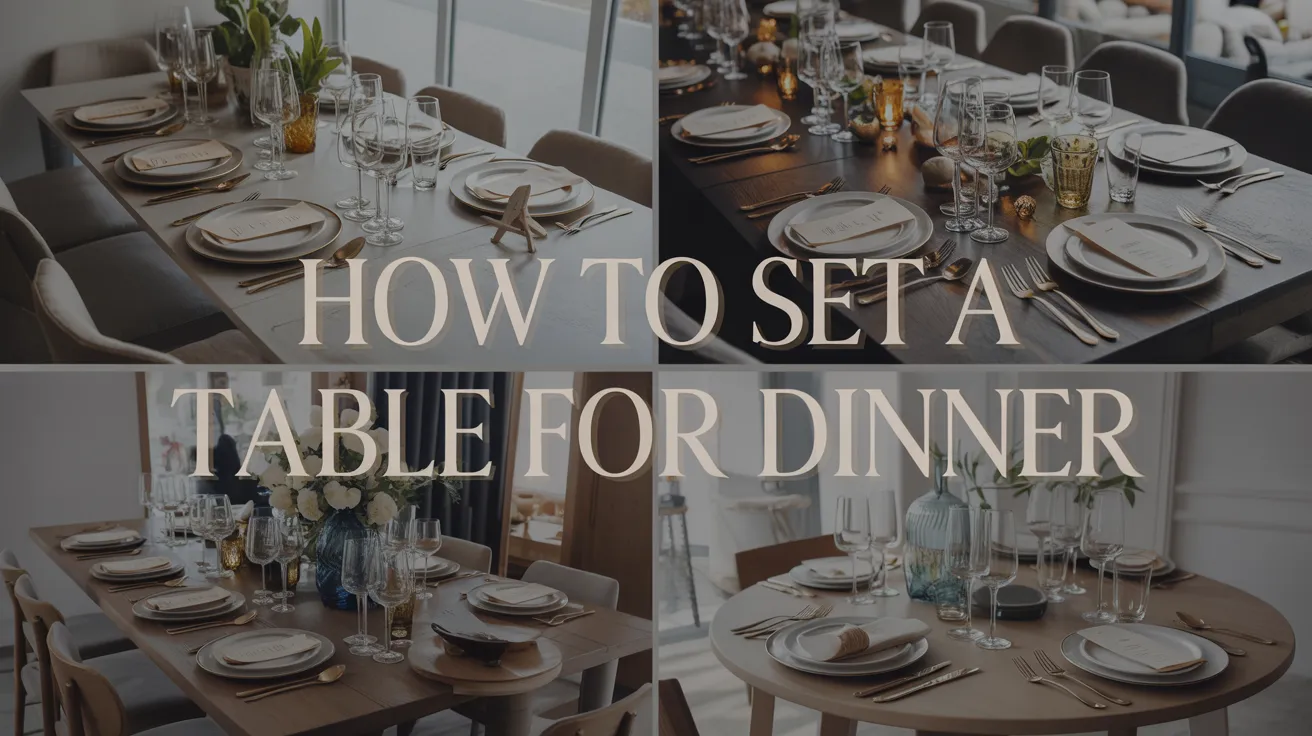How to Set a Table for Dinner: Complete Guide for Any Occasion
Set a table for dinner is about combining practicality with a touch of care to create a welcoming space. A proper table setting places the plate in the center, utensils on either side arranged by use, a napkin to the left, and a glass placed above the knives to keep everything organized and ready for the meal. This simple arrangement helps guests feel comfortable and signals that the host values their presence.
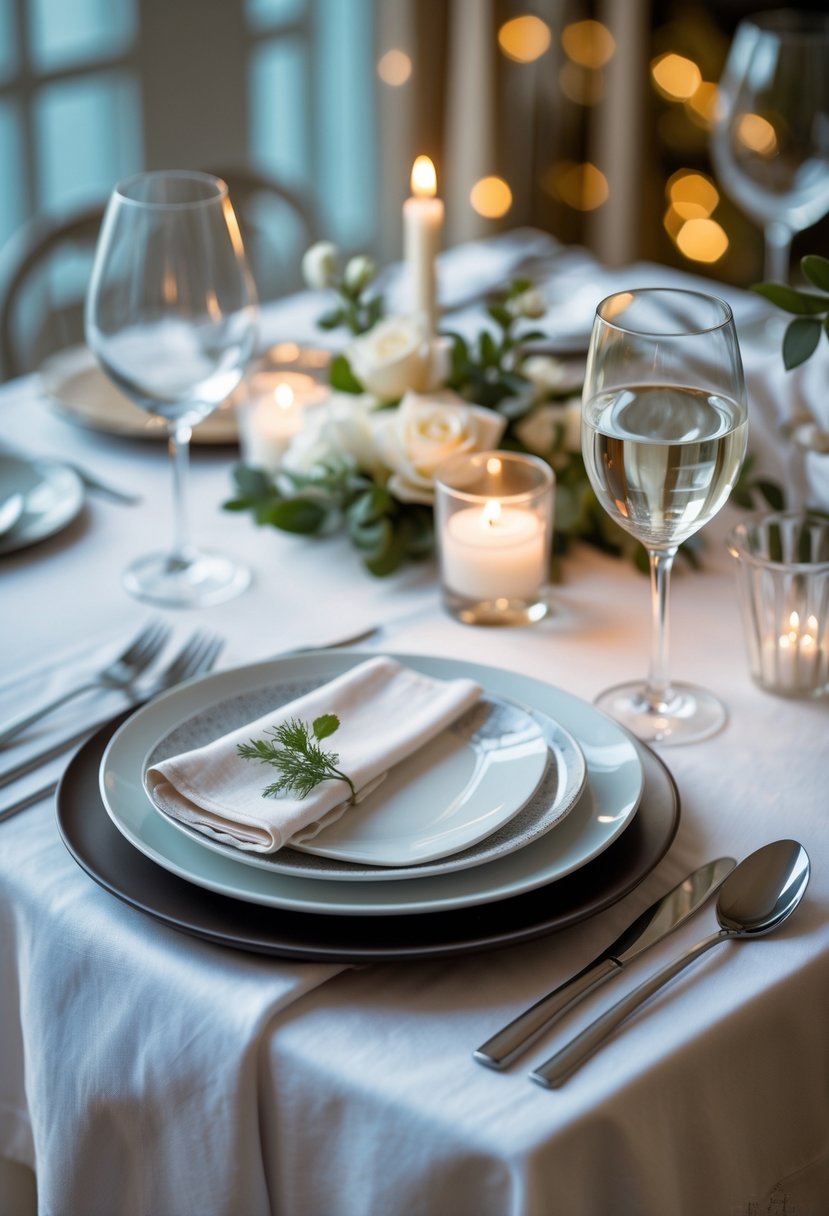
The level of formality can vary depending on the event. A basic setting works well for everyday meals, while casual dinners include a few extra pieces like a salad plate or soup bowl. Formal dinners add layers such as chargers, multiple forks, and different glasses for wine and water, all laid out with balanced spacing.
Knowing how to set a table properly doesn’t just improve the meal’s look; it helps the meal flow smoothly. It also shows thoughtfulness and attention to detail, making guests feel appreciated without adding stress to the host.
Table Setting Essentials
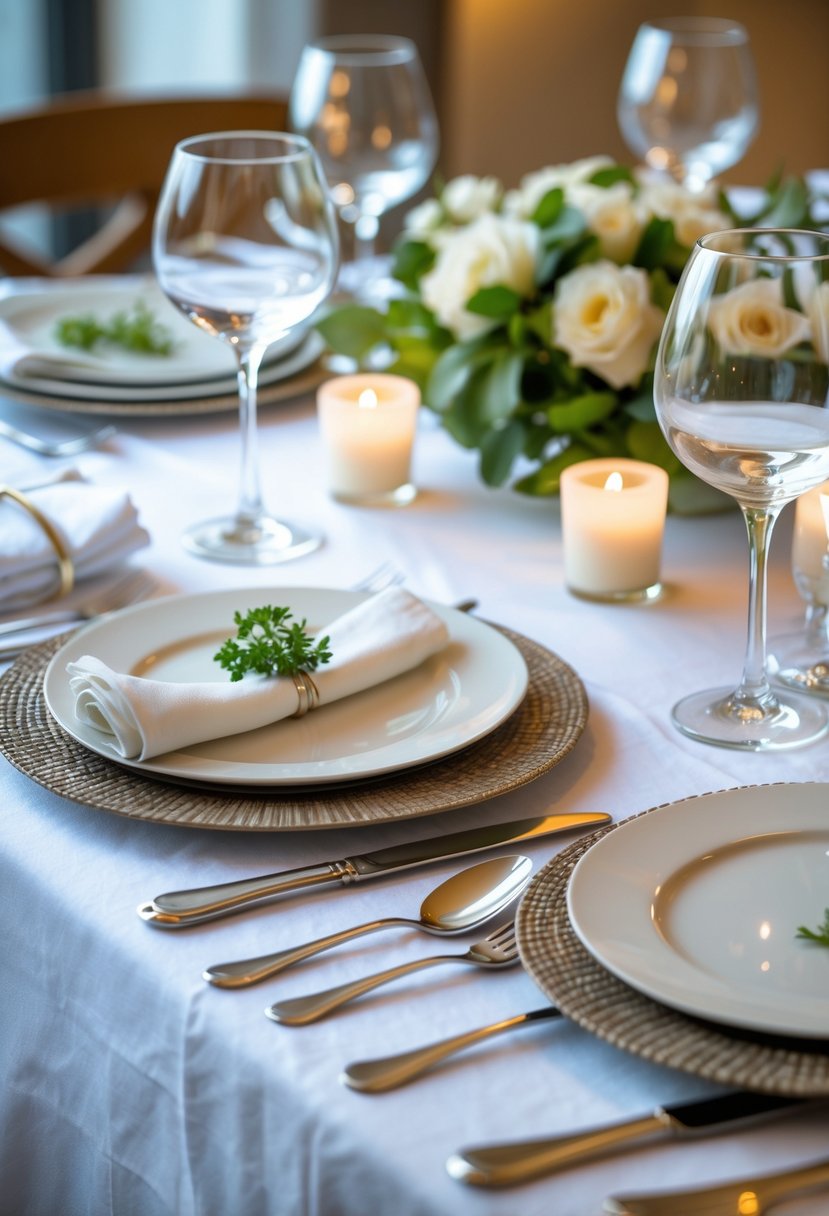
A well-set table starts with carefully chosen linens and placemats, followed by the right combination and arrangement of dishes. Proper placement of silverware and glassware ensures both functionality and a polished look. Attention to these details helps create a comfortable and inviting dining experience.
Choosing Table Linens and Placemats
Table linens, such as tablecloths and napkins, set the foundation for the table’s style. A clean, ironed tablecloth covering the entire table adds formality. For casual settings, placemats are a practical alternative, protecting the table while defining each diner’s space.
Placemats should be centered under each plate, with enough room for utensils and glasses. Choose colors and fabrics that complement the dishes and overall decor. Napkins may be cloth or paper, but cloth napkins are preferred for formal dinners. They can be placed to the left of the plate or neatly folded on top.
Selecting and Arranging Dishes
Dishes are arranged by the order of courses and type of meal. The dinner plate is the base of most settings and should be placed in the center of the linen or placemat. For meals with multiple courses, stacking is common: place a salad plate on top of the dinner plate, and if serving soup, a soup bowl goes on top of the salad plate.
In formal settings, a bread plate is placed above and slightly to the left of the main plate, with a butter knife resting horizontally across it. If a charger is used, it sits underneath the dinner plate and remains until the main course. Plates should align evenly with other tableware for a tidy appearance.
Silverware Placement Basics
Silverware placement follows the order of use, starting from the outside and moving inward. Forks go to the left of the plate, with the dinner fork closest to the plate and salad or fish forks outside if used. On the right, knives sit nearest to the plate with blades facing inward, followed by spoons on the outside.
Specific knives like the butter knife rest horizontally on the bread plate. Soup spoons are placed to the right of the knives. Dessert spoons or forks are positioned above the plate, with the handle facing right. All pieces should line up at the bottom for a clean, organized look.
Glassware and Drink Placement
Glassware is positioned above the knives, generally around where 1 o’clock would be on a clock face. The water glass is placed closest to the diner. Wine glasses follow, with the white wine glass slightly below and to the right of the water glass, and the red wine glass above and to the right.
Additional glasses, like a champagne flute or sherry glass, can be included depending on the meal. Only set out the glassware that will be used during the meal. Group glasses for easy reach but avoid overcrowding. Proper glass placement helps guests easily find their drink without confusion.
Types of Dinner Table Settings
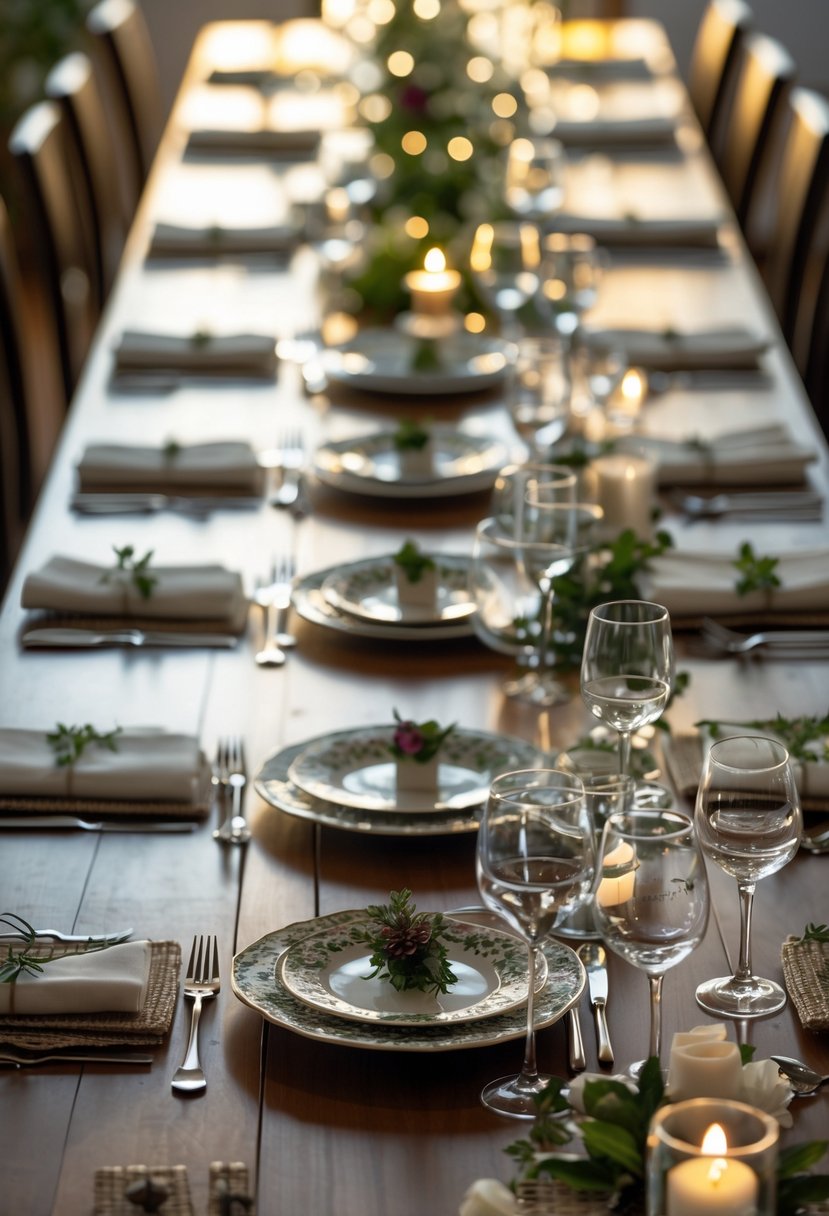
Setting a dinner table can vary based on the occasion and level of formality. Different settings use specific plates, utensils, and glassware to match the meal and guests’ expectations. Attention to these details helps create the right atmosphere and makes dining more comfortable.
Basic Table Setting
A basic table setting is used for everyday meals or simple gatherings. It includes only the items needed for the meal to avoid clutter. The setup starts with a placemat and a dinner plate in the center.
To the left of the plate, a napkin is placed with a fork on top. To the right, a knife is set closest to the plate with the blade facing inward, followed by a spoon. Above the plate, a water glass goes near the top right corner.
This setup is practical and easy to arrange, with all items aligned so the bottoms line up neatly. Guests have everything they need without extra pieces like multiple glasses or several forks.
Casual Table Setting
Casual settings add a few more items for relaxed dinner parties or informal events. The plates increase to include a salad plate on top of the dinner plate, and a soup bowl may go on top of the salad plate if soup is served.
Cutlery includes a dinner fork and potentially a salad fork, placed on the left side along with a napkin. On the right are the knife and spoon. Glassware expands to include a water glass and a wine glass, positioned above the knife.
Chargers, or large decorative base plates, can be used but styled simply, like in raw wood, to keep the casual tone. Salt and pepper shakers may be placed individually or centrally on the table.
Formal Table Setting
Formal table settings are for elegant dinners with multiple courses. They begin with an ironed tablecloth and chargers at each place. Plates stack with soup bowls on top, and bread plates sit to the upper left of the charger.
Silverware is arranged precisely: forks (salad fork outside, dinner fork inside) on the left, knives and spoons to the right, each spaced evenly with blades facing the plate. A butter knife is placed horizontally on the bread plate.
Glassware includes a water glass, white wine glass, and red wine glass arranged in a triangular pattern above the knives. A dessert spoon is placed above the charger. Salt and pepper shakers and place cards may be added above the dessert spoon.
This setting balances function and appearance, signaling a formal and carefully planned dinner party.
Conclusion
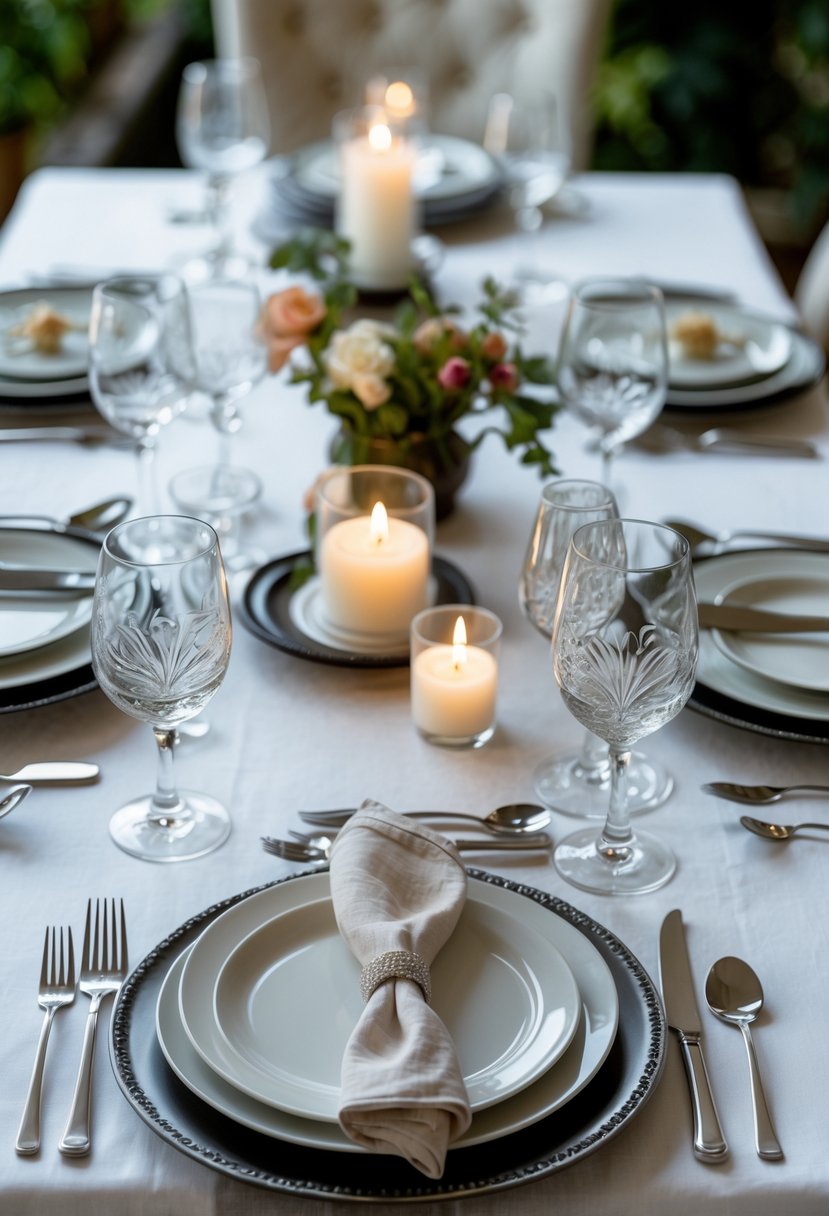
Setting a table is both practical and an expression of care for guests. It creates a comfortable space that supports the meal and conversation. Whether the setting is basic, semi-formal, or formal, the goal is to balance function and appearance.
The key rules to remember are simple: utensils go in order of use, forks to the left, knives and spoons to the right, and only set what will be used. This helps avoid confusion and clutter.
Hosts should choose a style that fits the occasion and their own comfort level. Casual meals need less formality, while formal dinners may require extra utensils and glassware. Flexibility is fine—as long as the setup is clean and organized, guests will feel at ease.
Using simple placement tips can guide hosts through any setting:
| Item | Placement |
| Forks | Left of the plate |
| Knives & spoons | Right of the plate (knife blade facing plate) |
| Glasses | Above knives, slightly right |
| Napkin | Left of forks or on plate |
Above all, the table should invite guests to relax and enjoy the meal. With attention to detail and some practice, anyone can set a table that is clear, functional, and visually pleasing.

